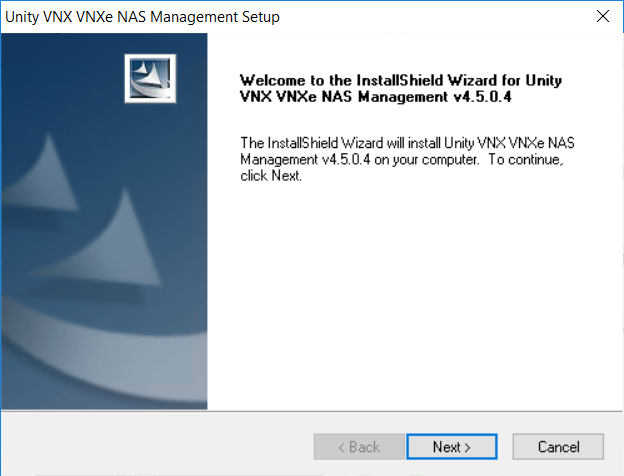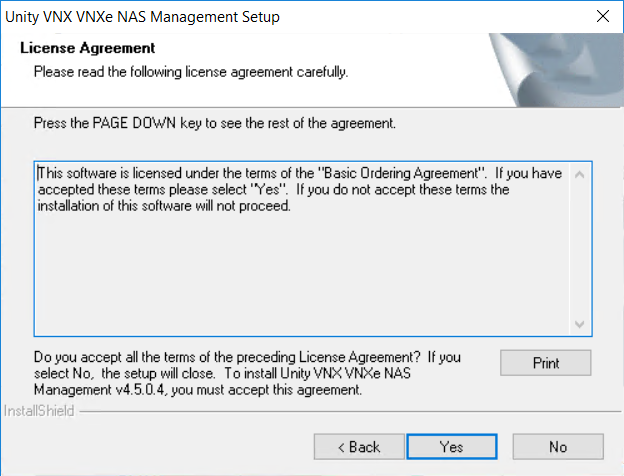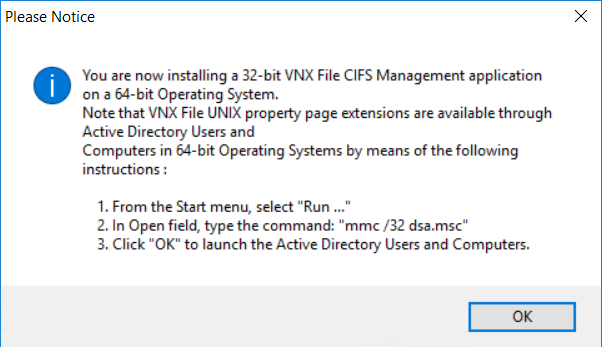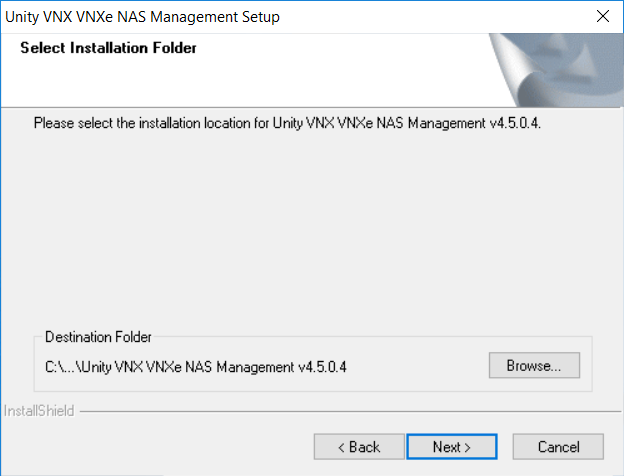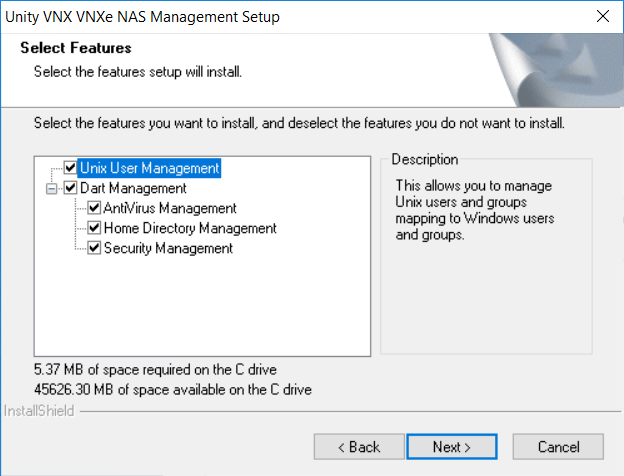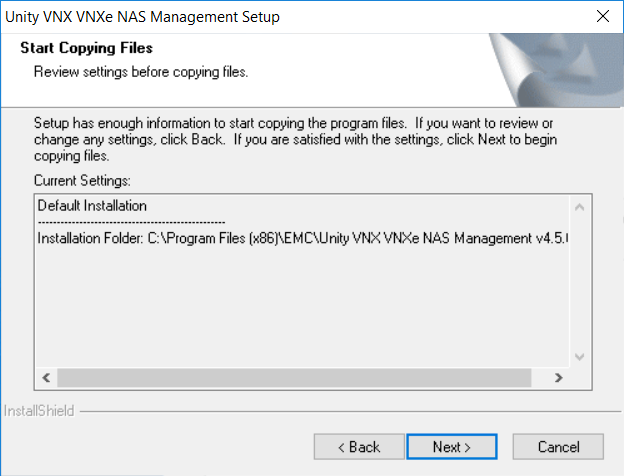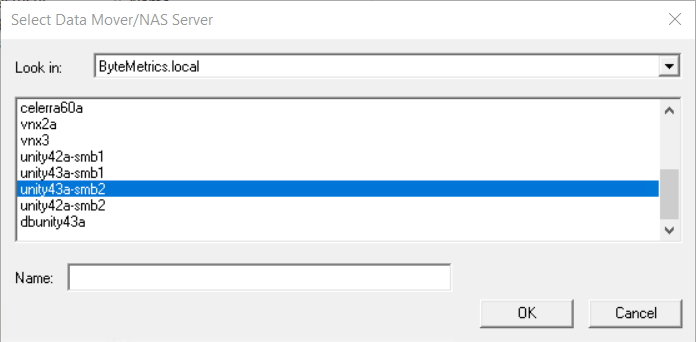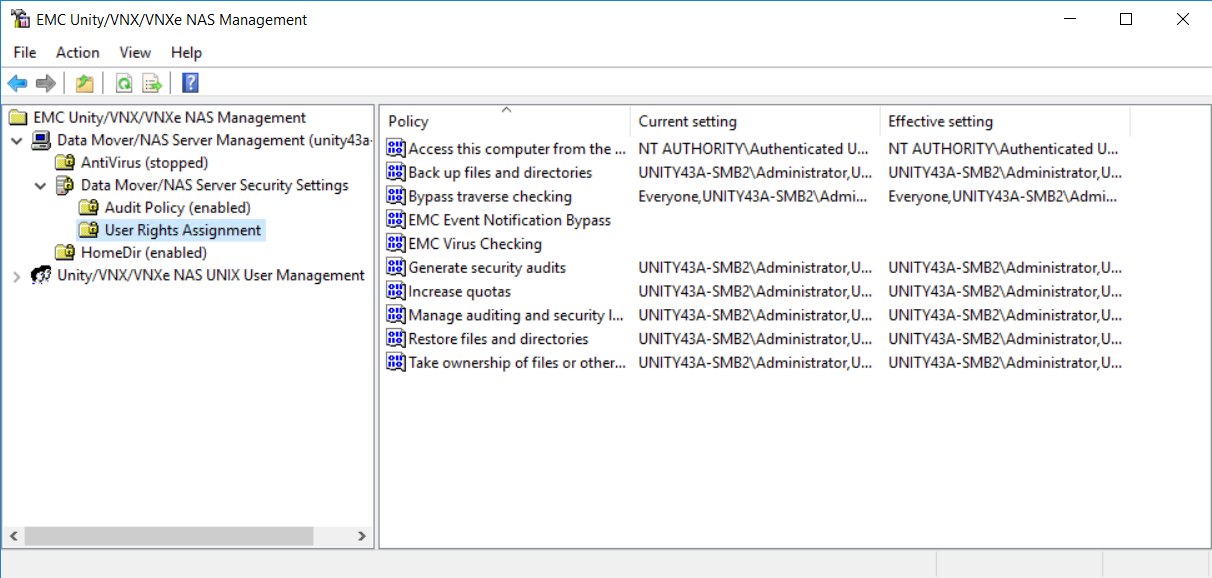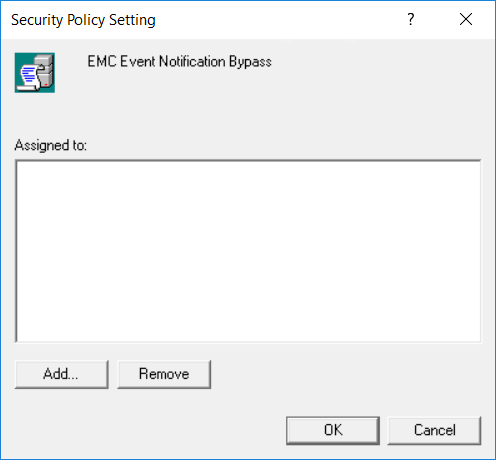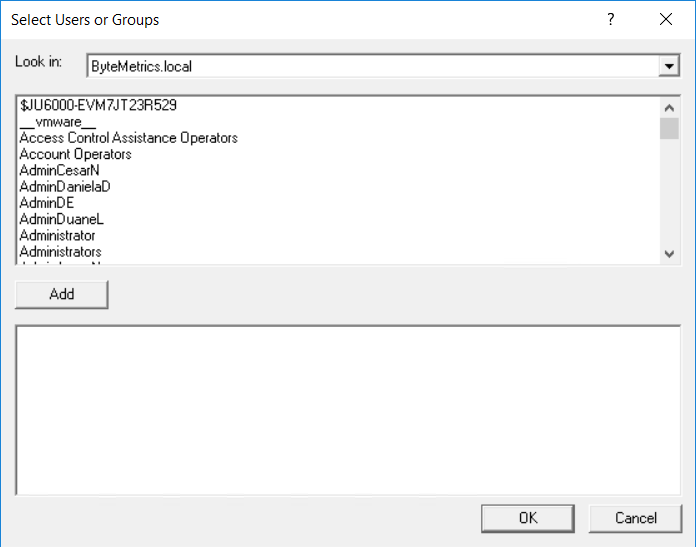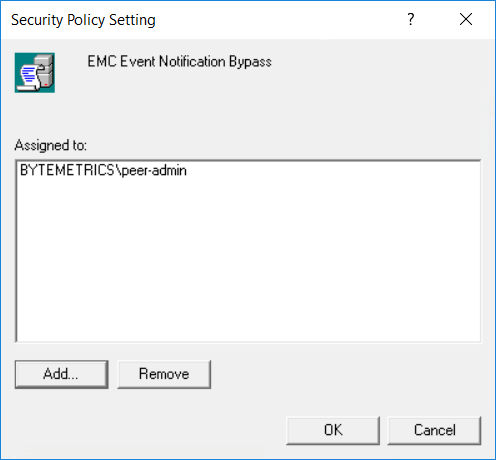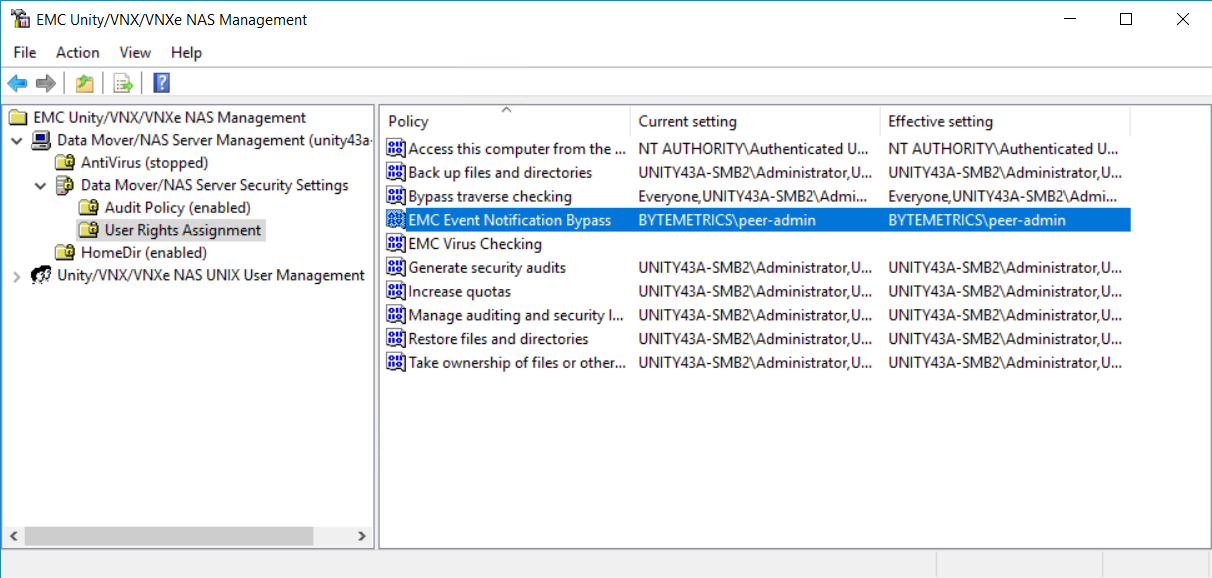Dell EMC Celerra | VNX | VNX 2 Configuration Guide
| Last Updated | 20 July 2021 |
Overview
This guide steps you through configuring your environment to work with a Dell EMC storage platform in preparation for installing Peer Software solutions. The last section of this guide provides troubleshooting information. During the configuration process, you will be installing and configuring software on the server that will host Peer Software solutions. This server is hereafter referred to as the CEE server. The software you will be installing and configuring includes:
- CEE (Common Event Enabler) framework – Required to receive real-time notifications from Dell EMC storage platforms.
- .NET Framework – Core Windows software needed to run the CEE framework.
- RabbitMQ Server – Message broker required by Peer Software solutions to receive real-time notifications from CEE.
- Erlang – Required by Rabbit MQ Server.
Requirements
- Your Dell EMC VNX/Celerra storage device must be running DART (VNX/Celerra operating system) v8.1.0 or later.
- Local administrator rights are required for most of the installation and configuration tasks.
- See Dell EMC Celerra | VNX | VNX 2 Prerequisites for other requirements.
Terminology
- CEE server – A Windows server hosting Common Event Enabler (CEE) framework and your Peer Software solutions.
- CEPP – The event notification framework that runs on a file-based VNX or Celerra storage device. All management of this framework is handled by Physical Data Movers (PDMs) and not by Virtual Data Movers (VDMs).
- CIFS server – Operates on either a Physical Data Mover or Virtual Data Mover, granting CIFS access to clients. A single PDM or VDM can host multiple CIFS servers.
- Common AntiVirus Agent (CAVA) – A software service that provides anti-virus and event-publishing services for Dell EMC storage platforms.
- Common Event Enabler (CEE) framework – A Dell EMC software product required to obtain real-time event notifications from an VNX/Celerra storage platform. Used to be called Celerra Event Enabler.
- Common Event Publishing Agent (CEPA) – A software service that provides event-publishing services for Dell EMC storage platforms.
- Control Station - The management server that is typically included in VNX deployments. It exposes DART's XML API, SSH access, and Unisphere.
- DART – The operating system of the VNX and Celerra storage platforms.
- Data Mover (or Physical Data Mover; PDM) – A blade server that provides NAS capabilities to back-end SAN storage arrays. PDMs are typically deployed in pairs with one being active and the other passive. Similar to a physical filer on NetApp's 7-Mode platforms.
- SMB/CIFS – The Server Message Block (SMB) Protocol is a network file-sharing protocol; it supersedes Common Internet File System (CIFS), an earlier protocol. SMB is used in this document to refer to both protocols.
- Virtual Data Mover (or VDM) – A virtual representation of a PDM that runs on top of a PDM. A single PDM can host zero or more VDMs. Similar to a vfiler on NetApp's 7-Mode platforms.
- VNX – Dell EMC storage platform that is available in file and/or block implementations. Replaces the Celerra NAS platform.
Configuration Tasks
Task 1. Confirming Configuration Readiness
- Ensure that the Dell EMC VNX/Celerra prerequisites are met for the Peer Software solution you will be using.
- If your storage platform (e.g., Unity and VNX) requires licensing for the Common Event Enabler (CEE) framework, ensure that CEE is licensed.
- Ensure that the Dell VNX/Celerra storage device is already configured to serve data via SMB. You should be able to access an SMB share from a Windows client BEFORE attempting to continue.
- Ensure that the date and time on the VNX/Celerra storage device are synchronized with any associated domains and the CEE server.
Task 2. Installing the .NET Framework on the CEE Server
- Run Windows PowerShell as an administrator.
Enter the following command to install .NET Framework v3.5:
Install-WindowsFeature Net-Framework-CoreAfter the installation is complete, the results are displayed in the PowerShell window.

- Close the PowerShell window.
Task 3. Installing CEE Framework on the CEE Server
- If any versions of CEE framework software earlier than v8.6 (including stand-alone CAVA or CEPA) are already installed on the CEE server, uninstall them before continuing.
- Download and stage the 64-bit CEE framework installer on the CEE server.
- If deploying for use with Isilon, we require v8.7.0 of the CEE framework. To obtain one of these versions, please contact Dell EMC technical support or your Peer Software technical contact.
- If deploying for use with Unity or VNX, we support v8.9.1 of the CEE framework. CEE v8.9.1 can be found here: https://dl.dell.com/downloads/DL81214_Common-Event-Enabler-8.9.1.0-for-Windows---32-and-64-bit.iso. Note that this download requires a Dell EMC support login.
- Install the CEE framework software:
- Run the CEE framework installer as an administrator.
The Welcome page of the CEE Install wizard appears. - Click Next.
The License Agreement page appears. - Accept the terms of the license agreement, and then click Next.
The Customer Information page appears. - Enter your user name and organization, select Anyone who uses this computer (all users), and then click Next.
The Setup Type page appears. - Select Complete, and then click Next.
The Symantec SAV for NAS page appears.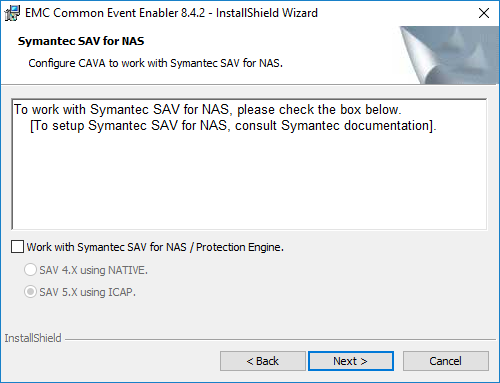
- Ensure that the Work with Symantec SAV for NAS/Protection Engine checkbox is not selected, and then click Next.
The Ready to Install the Program page appears. - Click Install.
When the installation is complete, the InstallShield Wizard Completed page appears. - Click Finish.
A dialog prompting you to restart the system appears.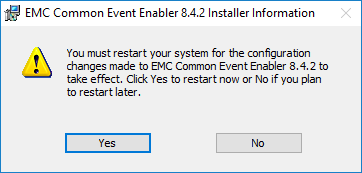
- Click No. You will restart the system later.
- Run the CEE framework installer as an administrator.
Task 4. Configuring CEE on the CEE Server
- Modify the registry value to instruct CEE framework to send events to RabbitMQ:
- Open the Registry Editor as an administrator.
- Navigate to the following location: HKEY_LOCAL_MACHINE > Software > EMC > CEE > CEPP > CQM > Configuration.
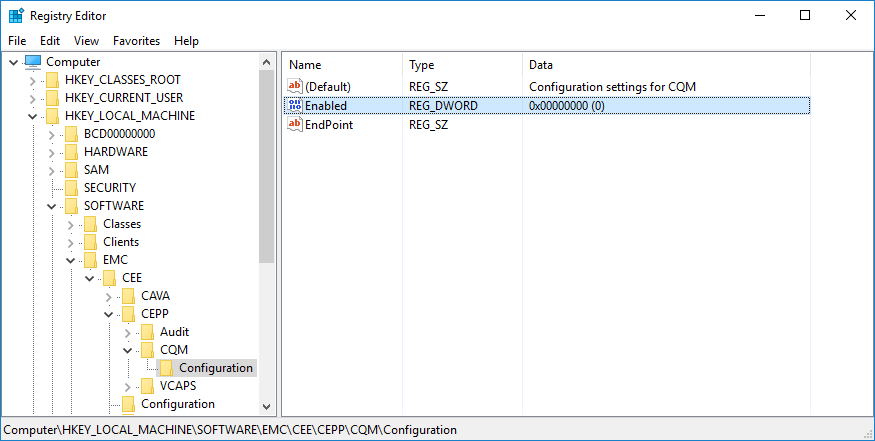
- Double-click the Enabled registry key.
The Edit DWORD (32-bit) Value dialog appears. - Change the number in Value data to 0, and then click OK.
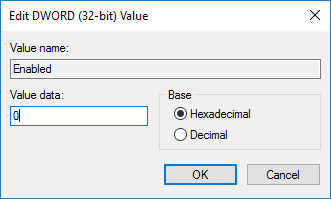
- Close the Registry Editor.
- Set the login credentials for the EMC CAVA service. The credentials should be the same as the ones you will use for the Peer Software service.
- Open the Windows Services manager as an administrator.
- Find the service named EMC CAVA.
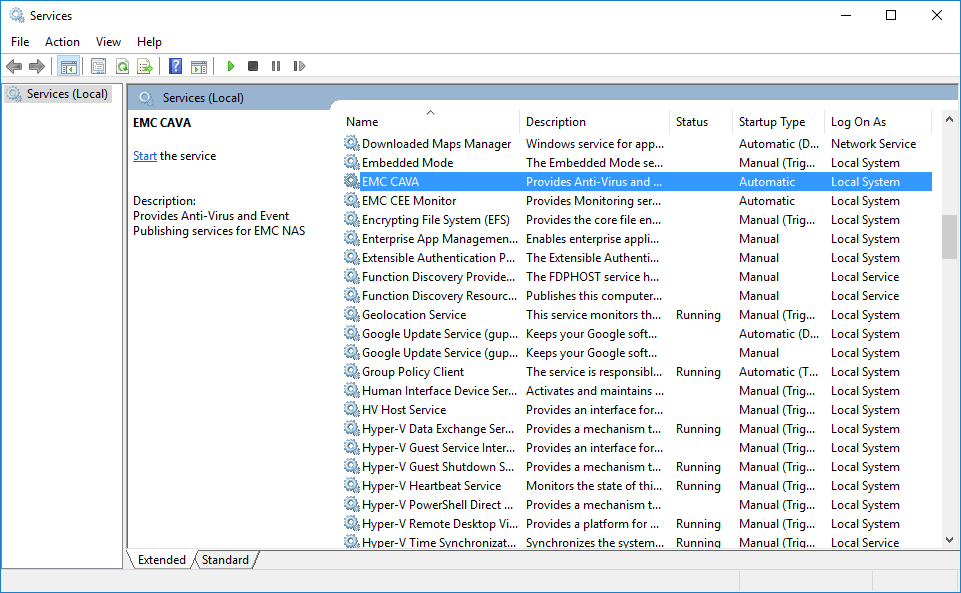
- Double-click EMC CAVA.
The EMC CAVA Properties (Local Computer) dialog appears. - Click the Log On tab.
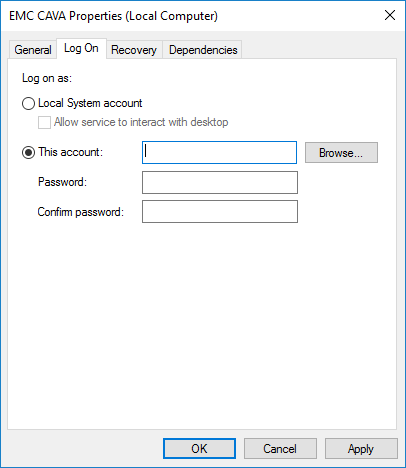
- Enter the account name and password, and then click OK.
A Services dialog appears, confirming that log-on rights have been granted. - Click OK.
- Restart the EMC CAVA service:
- Select the EMC CAVA service.
- Click the Restart link. (If the service is not already running, click the Start link instead.)
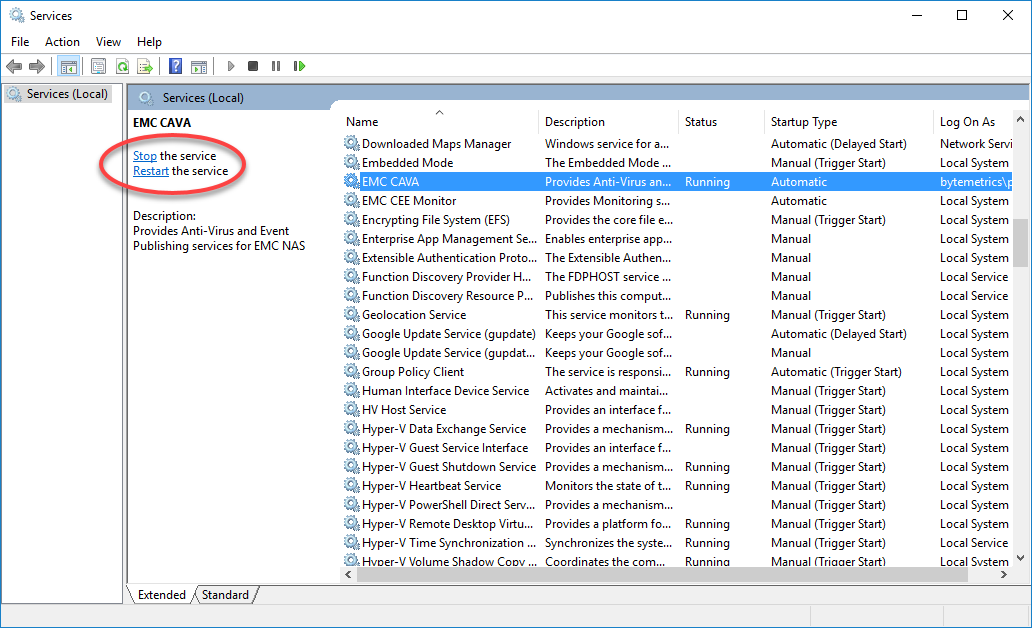
- Close the Services manager window.
Task 5. Installing Erlang on the CEE Server
- Download and stage the 64-bit Erlang installer on the CEE server.
- If deploying for use with Isilon, we require v20.3 of Erlang. Erlang v20.3 can be found here: https://erlang.org/download/otp_win64_20.3.exe.
- If deploying for use with Unity or VNX, we support v25.x versions of Erlang (such as v25.2). Erlang v25.2 can be found here: https://github.com/erlang/otp/releases/download/OTP-25.2/otp_win64_25.2.exe
- Install the Erlang software:
- Run the Erlang installer as an administrator.
The Erlang Setup wizard appears. The Choose Components page is displayed. - Do not make any changes to the default selections.
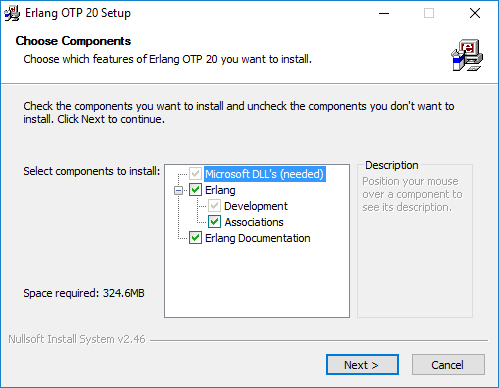
- Click Next.
The Choose Installation Location page appears. - Accept the default location by clicking Next.
The Choose Start Menu Folder page appears. - Do not make any changes to the default location.
- Click Install.
If the system does not have the correct C++ runtime installed, the Microsoft Visual C++ installer dialog appears.
Continue with Step 2g if the dialog appears; otherwise, skip to step 2i. - Click the checkbox to agree to the license terms and condition, and then click Install.
After the Visual C++ installation is completed, the dialog displays a message confirming the success of the installation. - Click Close to close the confirmation dialog.
The Erlang Setup wizard displays a status dialog while installing Erlang. - Click Close when the installation has completed.
- Run the Erlang installer as an administrator.
Task 6. Installing and Configuring RabbitMQ Server on the CEE Server
Download and stage the 64-bit RabbitMQ Server installer on the CEE server.
If deploying for use with Isilon, we require v3.7.4 of RabbitMQ. RabbitMQ v3.7.4 can be found here: https://github.com/rabbitmq/rabbitmq-server/releases/download/v3.7.4/rabbitmq-server-3.7.4.exe.
- If deploying for use with Unity or VNX, we support v3.11.x versions of RabbitMQ (such as v3.11.10). RabbitMQ v3.11.10 can be found here: https://github.com/rabbitmq/rabbitmq-server/releases/download/v3.11.10/rabbitmq-server-3.11.10.exe.
- Install the RabbitMQ Server software:
- Run the RabbitMQ Server installer as an administrator.
The RabbitMQ Server Setup wizard appears. The Choose Components page is displayed. - Do not make any changes to the default selections.
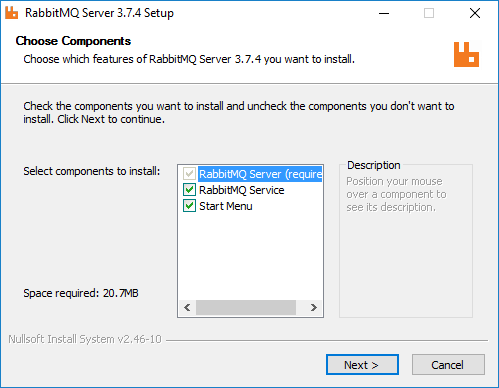
- Click Next.
The Choose Install Location page appears. - Accept the default location by clicking Install.
The Setup wizard displays a status dialog while installing RabbitMQ Server. - Click Next when the installation is complete.
- Click Finish to close the setup wizard.
- Run the RabbitMQ Server installer as an administrator.
- Enable the RabbitMQ Server management plugin:
- Open a command prompt as an administrator.
- In the command prompt window, change to the directory that the RabbitMQ Server is installed (typically C:\Program Files\RabbitMQ Server\rabbitmq_server-X.X.X\sbin, where X.X.X is the version number).
Enter the following command in the command prompt window:
rabbitmq-plugins enable rabbitmq_managementThe command prompt window displays confirmations that the plug-ins have been configured and enabled.
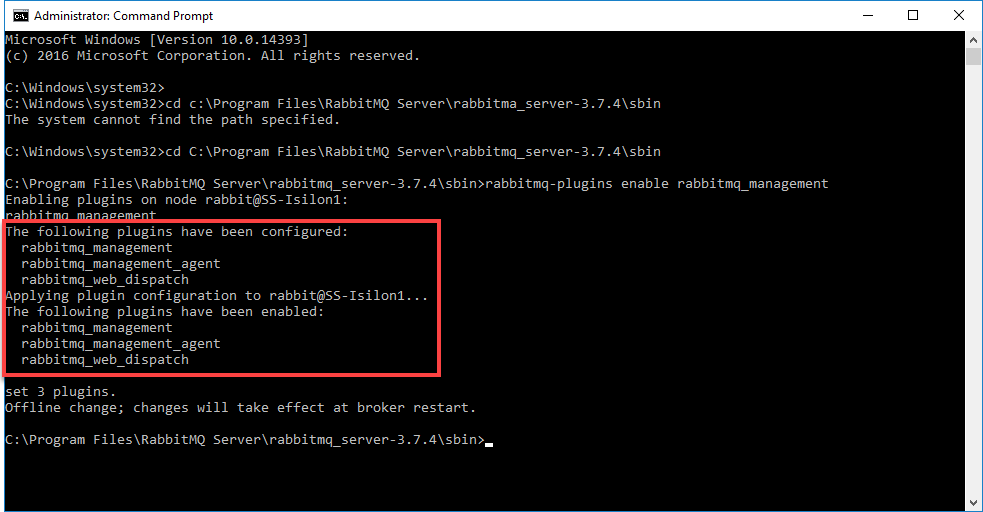
Close the command prompt window.
Restart the RabbitMQ service:
Reopen the Services manager as an administrator.
- Select the Rabbit MQ service.
- Click the Restart link.

- Close the Services manager.
- Enable the RabbitMQ Server to receive messages:
- Open Notepad as an administrator.
Open the file MsgSys.xml in Notepad.
This file should be located in the installation directory of CEE framework (for example, C:\Program Files\EMC\CEE).Tip
To locate the MsgSys.xml file, change the file filter drop-down list from Text Document (.txt)* to All Files; otherwise, only text files will be displayed in the Open dialog.
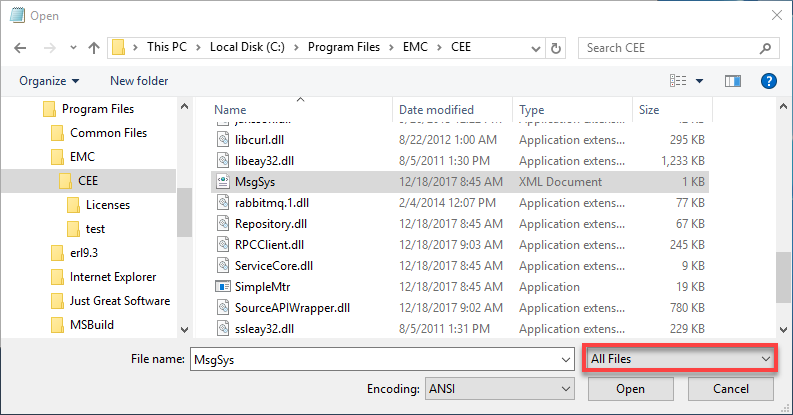
The MsgSys.xml file is displayed in a Notepad window.
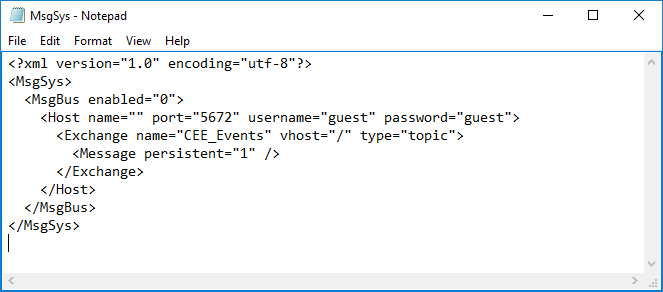
Make the following changes to the file:
Find the following line:
<MsgBus enabled="0">
and set MsgBus enabled to "1".
Find the following line and set Host name to "localhost" :
<Host name="" port="5672" username="guest" password="guest">
The file now appears as follows:
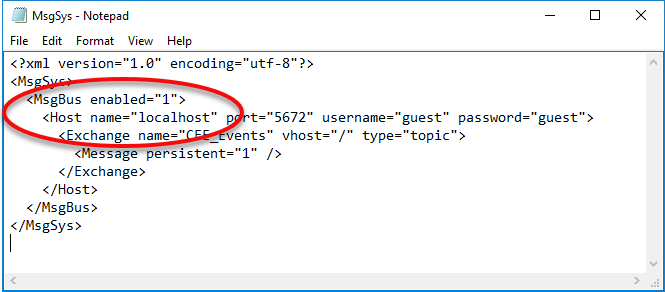
Save your changes to MsgSys.xml, and then close the file.
- Ensure that the RabbitMQ Service is installed and running:
- Reopen the Services manager as an administrator.
- Find the service named RabbitMQ.
- Confirm that the service is running.
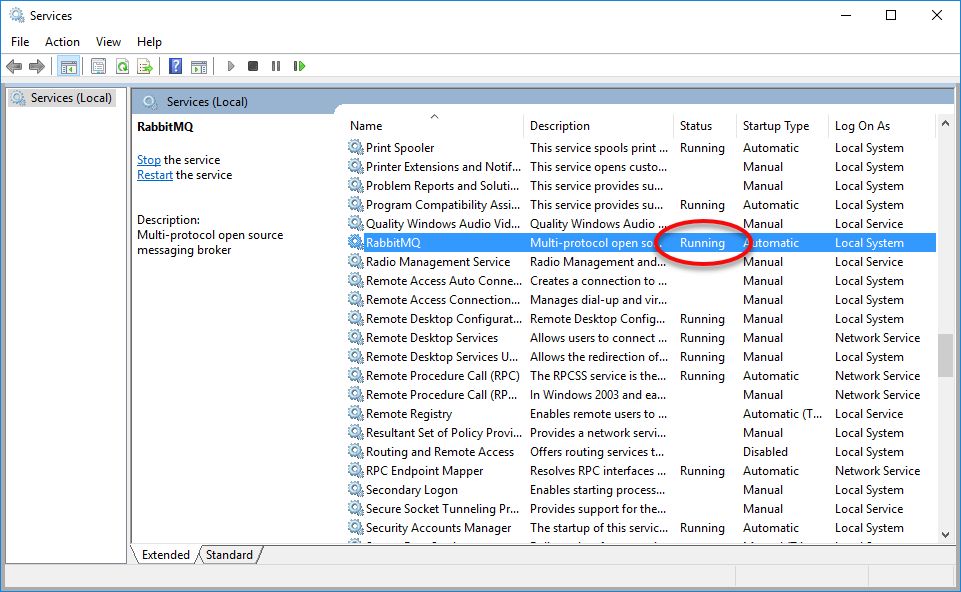
- Close the Services manager.
Task 7. Configuring the VNX/Celerra Storage Device
The CEPP service on the VNX/Celerra device is responsible for sending event and client activity notifications to the Peer Software solutions. You must be an admin user of the VNX/Celerra storage device to perform the configuration steps.
- Open an SSH session to the Control Station of the VNX storage device using the nasadmin account.
- Ensure that the date and time on the VNX storage device (specifically any appropriate Physical Data Movers) are synchronized with any associated domains and the CEE server:
To enable Network Time Protocol synchronization on a Physical Data Mover, run the following command:
server_date <Data Mover name> timesvc start ntp <NTP server IP>
where:
<Data Mover name> is the name of a Physical Data Mover.
<NTP server IP> is the IP address of the NTP server.
If the service is already running, a message will be displayed:
To set the date and time manually, run the following command:
server_date <Data Mover name> <YYMMDDHHMM>
where:
<Data Mover name> is the name of a Physical Data Mover.
<YYMMDDHHmm> is the current date and time; <YY> is the year; the first <MM> is the month; <DD> is the day; <HH> is the hour (in 24-hour system); and <mm> is the minute.
- Configure the CEPP framework on the appropriate Physical Data Mover:
If the CEPP server is running, stop it using the following command:
server_cepp <Data Mover name> -service -stop
If you have an existing cepp.conf file, copy it from the Data Mover to the Control Station using the following command:
server_file <Data Mover name> -get cepp.conf cepp.conf
Skip this step if the CEPP framework has not been previously configured (the command will fail because there isn't an existing config file).
Edit the cepp.conf file using the following command:
vi cepp.conf
Add or modify the text in the cepp.conf file to match the following example:
CODEcifsserver=<CIFS Server name> surveytime=10 pool name=peer \ servers=<CEE server name or IP address> \ preevents= \ postevents=OpenFileNoAccess|OpenFileRead|OpenFileWrite|CreateFile|CreateDir|DeleteFile|DeleteDir|CloseModified|CloseUnmodified|RenameFile|RenameDir|SetAclFile|SetAclDir|FileWrite|SetSecFile|SetSecDir \ option=ignore \ reqtimeout=5000 \ retrytimeout=1500where:
<CIFS Server name> is the name of the CIFS server. It must point to a CIFS server on a Physical Data Mover and not to a CIFS server on a Virtual Data Mover. Do not list multiple CIFS servers, even in an environment in which multiple CIFS servers will be monitored for real-time events.
<CEE server name or IP address> is the name or IP address of the CEE server. Do not enter multiple server names or IP addresses. Entering multiple server names or IP addresses will result in events being sent in a round-robin fashion to configured CEE servers, and as such, not all events will be received by all CEE servers. To send every event to multiple CEE Servers directly from the CEPP service itself, you must configure additional pools (a maximum of 3 for post-events and a maximum of 1 for pre-events).Tip
Pay close attention to the location of all slashes (\). Putting a slash in the wrong location will prevent the CEPP service from starting.
The modified file should appear as follows:
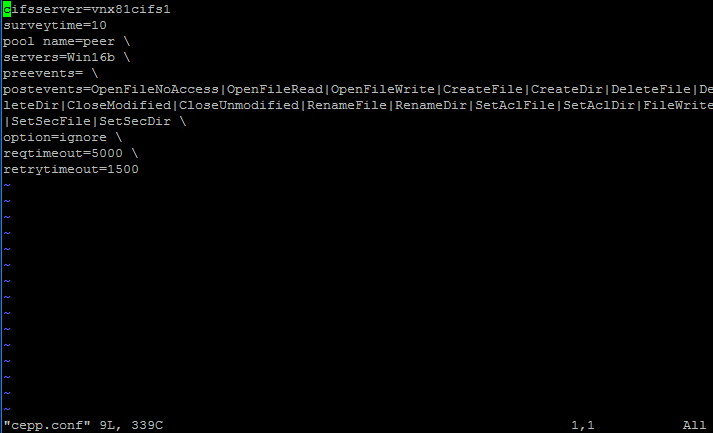
- Save the changes to the cepp.conf file:
- Press the Esc key.
- Enter :wq.
Move the configuration file to the appropriate Physical Data Mover using the following command:
server_file <Data Mover name> -put cepp.conf cepp.confStart the CEPP service using the following command:
server_cepp <Data Mover name> -service -startVerify that the CEPP service is running and configured correctly by running these two commands:
server_cepp <Data Mover name> -service -statusserver_cepp <Data Mover name> -pool -infoThe configuration information is displayed after you run the second command.

Task 8. Installing and Configuring the Dell EMC Unity/VNX/VNXe NAS Management Tool
- Download the Dell EMC Unity/VNX/VNXe NAS Management tool. You can download the software from Dell EMC's support site (requires a Dell EMC account):
https://download.emc.com/downloads/DL48750_Unity-and-VNX-FileCifsMgmt.exe-8.1.9.157.exe - Install the NAS Management tool software:
- Run the NAS Management installer as an administrator.
The Unity VNX VNXe NAS Management Setup wizard appears. - Click Next.
The License Agreement page appears. - Click Yes to accept the license agreement.
A notification about installing the 32-bit version appears. - Click OK.
The Select Installation Folder page appears. - Click Next to accept the default location.
The Select Features page appear. - Click Next to install all the features.
The Start Copying Files page appears. - Click Next to start the installation.
- Click Finish when the installation has completed.
- Run the NAS Management installer as an administrator.
- Open the EMC Unity/VNX/VNXe NAS Management console.
- Open the Control Panel and navigate to System and Security > Administrative Tools.
- Open EMC Unity VNX VNXe NAS Management as an administrator.
- Connect to all appropriate NAS servers:
- In the navigation pane, right-click the Data Mover/NAS Server Management folder, and then select Connect to Data Mover/NAS Server… from the shortcut menu.
- In the Select Data Mover/NAS Server dialog that appears, select the appropriate VNX Data Mover or Unity NAS server, and then click OK.
- In the navigation pane, right-click the Data Mover/NAS Server Management folder, and then select Connect to Data Mover/NAS Server… from the shortcut menu.
- Add the Peer Agent or PeerSync service account to the EMC Event Notification Bypass and EMC Virus Checking security policies:
- Navigate to the Data Mover/NAS Server Management > Data Mover/NAS Server Security Settings >User Rights Assignment folder.
The list of user rights assignment settings appears in the details pane and includes their current setting and effective setting. - In the details pane, right-click the EMC Event Notification Bypass policy, and then select Security from the shortcut menu.
The Security Policy Setting dialog appears and lists users or groups that are already assigned to the selected user rights assignment. If no assignments exist, the list is blank. - Click Add.
The Select User or Groups dialog appears. - In the Look in box, select the domain in which the Agent or PeerSync account is located.
- In the upper pane, select the Peer Agent or PeerSync service account, and then click Add.
The account appears in the lower pane. - Click OK.
The account is now listed in the Security Policy Setting dialog. - Click OK.
The account is now assigned to the EMC Event Notification Bypass policy. - Repeat Steps 5b-g for the EMC Virus Checking policy.
Note: No testing should be performed with this service account once these settings are in place.
- Navigate to the Data Mover/NAS Server Management > Data Mover/NAS Server Security Settings >User Rights Assignment folder.
- Restart the EMC CAVA service:
- Reopen the Services manager as an administrator.
- Select the EMC CAVA service.
- Click the Restart link.
The setup of your Unity/VNX/VNXe storage device is now complete.
Troubleshooting
Error 0x800F0954 When Installing .NET Framework 3.5
When installing .NET 3.5 on Windows Server 2019, the following error may appear:
The error 0x800f0954 refers to CBS_E_INVALID_WINDOWS_UPDATE_COUNT_WSUS, which indicates that your system may have been configured to use a WSUS server (on your domain network) to get updates instead of connecting to Windows Update servers directly.
You need to reinstall the .NET package from a Server 2019 installation disk by following these steps:
- Attach the Windows Server 2019 installation disk to the server.
Run the following command in an elevated command prompt.
dism /online /enable-feature /featurename:NetFX3 /Source:H:\sources\sxs /LimitAccesswhere H:\ represents the drive letter of the attached Windows Server 2019 installation disk.
Error 1053 When Starting CAVA Service
If you get Error 1053 when you try to start the EMC CAVA service, ensure that the .NET 3.5 Framework is installed on the CEE server, and then restart the EMC CAVA service on the CEE server.Starting RabbitMQ Issue
If you experience an issue with starting RabbitMQ, try the following steps:- On the CEE server, open a command prompt as an administrator.
- Navigate to the directory where RabbitMQ Server is installed (typically C:\Program\Files\RabbitMQ Server\rabbitmq_server-X.X.X\bin, where X.X.X is the version number).
Enter the following three commands:
rabbitmq-service stop
rabbitmq-service remove
rabbitmq-server startIf the start command results in an error about an Erlang cookie, reset the HOMEDRIVE and HOMEPATH environment variables to a locally accessible folder (such as C:\Users\Public). To set these environment variables:
Open a command prompt as an administrator.
When prompted to allow changes, click Yes.
Enter the following commands in the command prompt window:
set HOMEDRIVE=C:
set HOMEPATH=/Users/Public
Rerun the following command and verify that no Erlang cookie errors are encountered:
rabbitmq-service start- Use Ctrl+C to stop the RabbitMQ Server process.
- Delete the folder C:\Users\%Username%\AppData\Roaming\RabbitMQ.
Enter the following commands in the command prompt window:
rabbitmq-service install
rabbitmq-service start- Verify that the folder C:\Users\%Username%\AppData\Roaming\ was recreated and populated with db and log folders.
Technical Support
USA +1 703-763-7700
EMEA +49 89 2620763-22
UK/IE +44 20 777 098 22
Related Articles
- Achieving high availability for the PMC through active-passive configuration
- Achieving high availability for the PMC through active-passive configuration (v4.7.0 - v5.1.1)
- Achieving high availability for the PMC through active-passive configuration (v5.2 only)
- Achieving high availability for the PMC through active-passive configuration (v6.0 and later)
- Configuration Guides
- Configure PeerSync to synchronize in a clustered environment
- Configure the Agent installer to run unattended
- Configure the PeerSync Listener installer to run unattended
- Dell EMC Celerra | VNX | VNX 2 Configuration Guide
- Dell PowerScale | EMC Isilon Configuration Guide
- Dell PowerScale Syslog Configuration Guide
- Dell PowerStore Configuration Guide
- Dell Unity Configuration Guide
- Dell Unity Legacy Configuration Guide
- How do I install Health Checker on a remote server?

